Canon 35mm f/1.4 L USM
On 35mm cameras, this lens is in the starting area for wide angles, but on cropped dSLR’s it is more of a standard lens. It is, however, a very fast lens that can be used in situations where ‘normal’ lenses would not be able to cope. We take a look at how it performs.
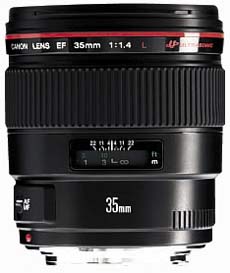 Specification
Specification
- Focal length 35mm
- Aperture f/1.4
- Angle of view
- Filter size / type 72mm
- Construction Elements/groups 11 elements in 9 groups
- Focusing type Internal USM
- Closest focus 0.3m
- Weight 0.580kg
- Dimensions (Dia x length) 79x86mm
- Mounts available Canon EF
- Tripod bush No
- Price £
Build and Handling
Prime lenses can seem very simple to use after some of the modern zooms and the simplicity eases the achievement of build quality. A single focussing ring in front of a classic distance window that is marked with a useful depth-of-field scale pretty well sums up this lens. The only other control on the lens is the switch that changes the focussing from Manual to Autofocus.
The lens seems a little large compared to say, an 18-55mm zoom, but this is due to the wide aperture that this lens sports.
Autofocus is almost silent, quite quick due to the USM motor and didn’t hunt at all on a 1D, although it does have a little think about it in low light on a 300D. We are only pointing this out because there was little else to fault with the handling of this lens.
Optical Performance
As you would expect from a prime lens, especially one with Canon’s famous L suffix, the optical performance was good. You will see from the chart that a gentle curve is achieved with no wild jumps from one stop to the next, always the sign of a well-produced lens. It also manage to start from a decent wide open performance, showing that it has not been pushed beyond what it is designed for.
The only place it is let down, and here only slightly, is in the control of chromatic aberrations. As it is not a new lens and is designed originally for 35mm, the control of these anomalies has come on a long way since the introduction of digital and this lens has been left behind a little with modern techniques.
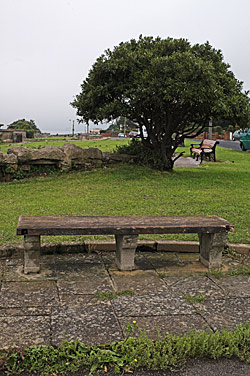 Images display good detail and contrast | 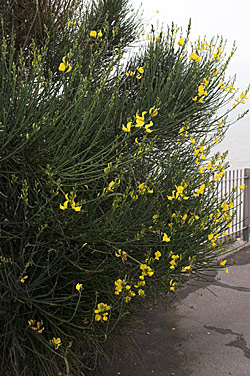 The lens achieves good depth-of-field |
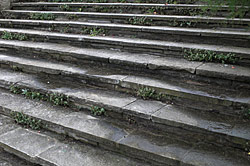 Virtually no distortion is produced |
Click on each comparision photo below to view full size versions
Below is our lens test data. To find out how to use these graphs look at this article: How we test lenses
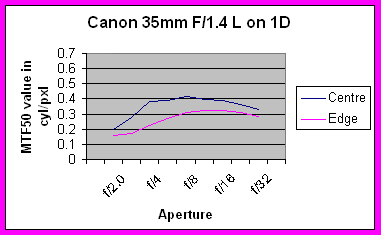
Verdict
The build quality and heritage of his lens is unquestionable and for full frame sensors or 35mm, it is still in the top flight. As a standard prime on a cropped sensor dSLR it will do a good job, but might just be out-performed by some of the younger opposition.
In summary the main positive points of the Canon 35mm f/1.4 L USM are:
![]() Excellent Build
Excellent Build
![]() Good low light performance
Good low light performance
![]() Consistent performance
Consistent performance
Negative points are:
![]() Price
Price
![]() Starting to show its age.
Starting to show its age.
Check the latest price of the Canon 35mm f/1.4 L USM here
Test by Ian Andrews www.wildaboutkent.co.uk
The examples shown here look oversharpened, they have all kinds of jaggies.
Even taking advantage of the crop sensor cameras using only the central 'sweet spot' of the image circle, the results of the full sized image provided here, doesn't look all that sharp, in my opinion.
I certainly wouldn't be happy with this performance if I purchased a new sample of this lens which performed only to this level. I would be returning it very promptly!
It will be interesting to see if the new Mk II version performs any better.
David Chamberlain
Add your message
Please login here or if you've not registered, you can register here. Registering is safe, quick and free.
photodo Stats
428 MTF tests
74 in-depth photodo reviews
100+ users join each day
Help the lens community by reviewing or rating a lens today via our lens search
Latest Lens Reviews
- Chinon 28mm f/2.8 Vintage Lens Review
- Canon EF 70-200mm f/4L IS II USM Lens Review
- Samyang AF 85mm f/1.4 EF Review
- Sigma 70mm f/2.8 DG Macro Art Review
- Samyang AF 24mm f/2.8 FE Review
- Meike 50mm f/1.7 Review
- Tamron 70-210mm f/4 Di VC USD Review
- Lensbaby Burnside 35mm f/2.8 Review
- Asahi Super Takumar 50mm f/1.4 Review
- Asahi Super-Multi-Coated Takumar 135mm f/3.5 Review


